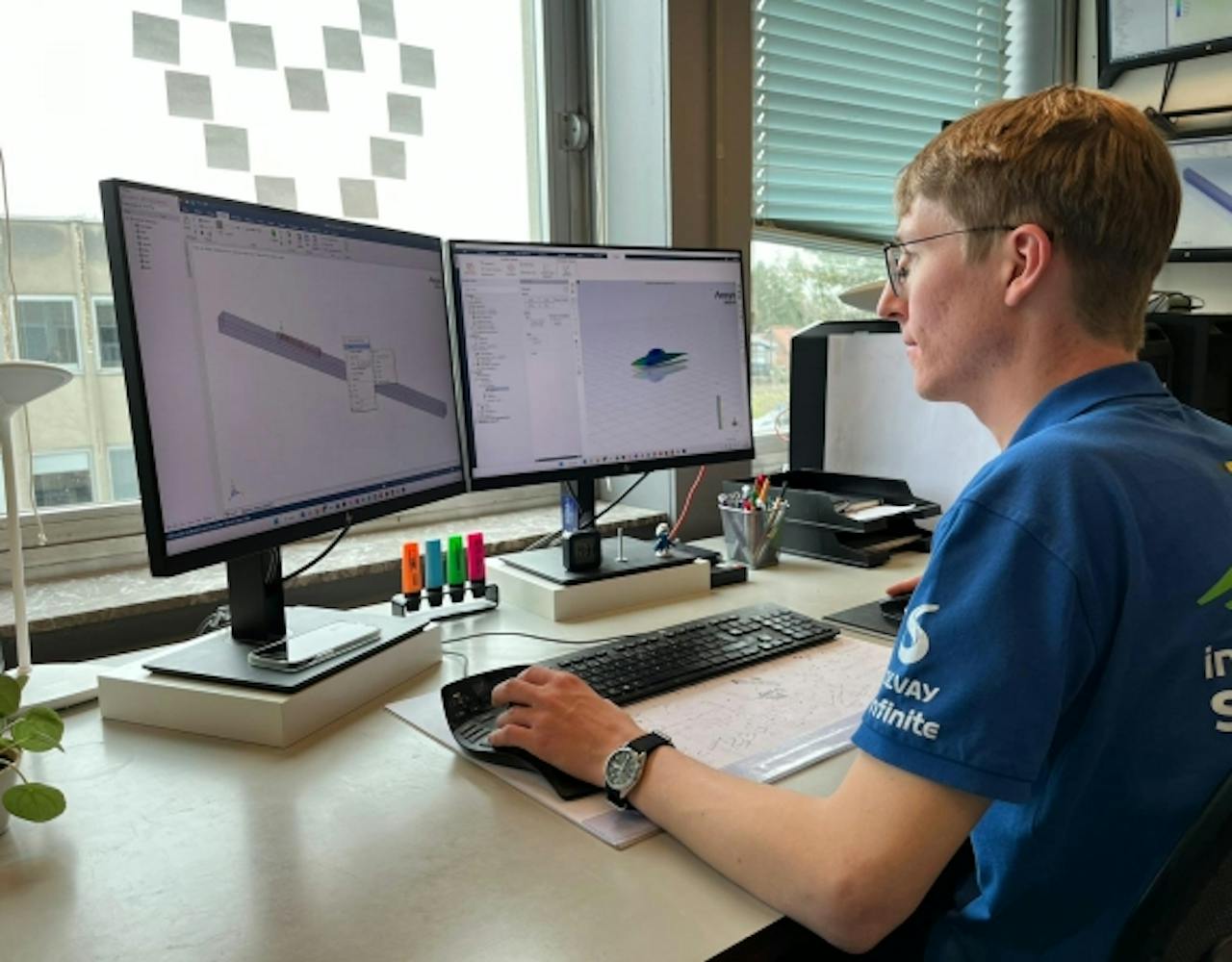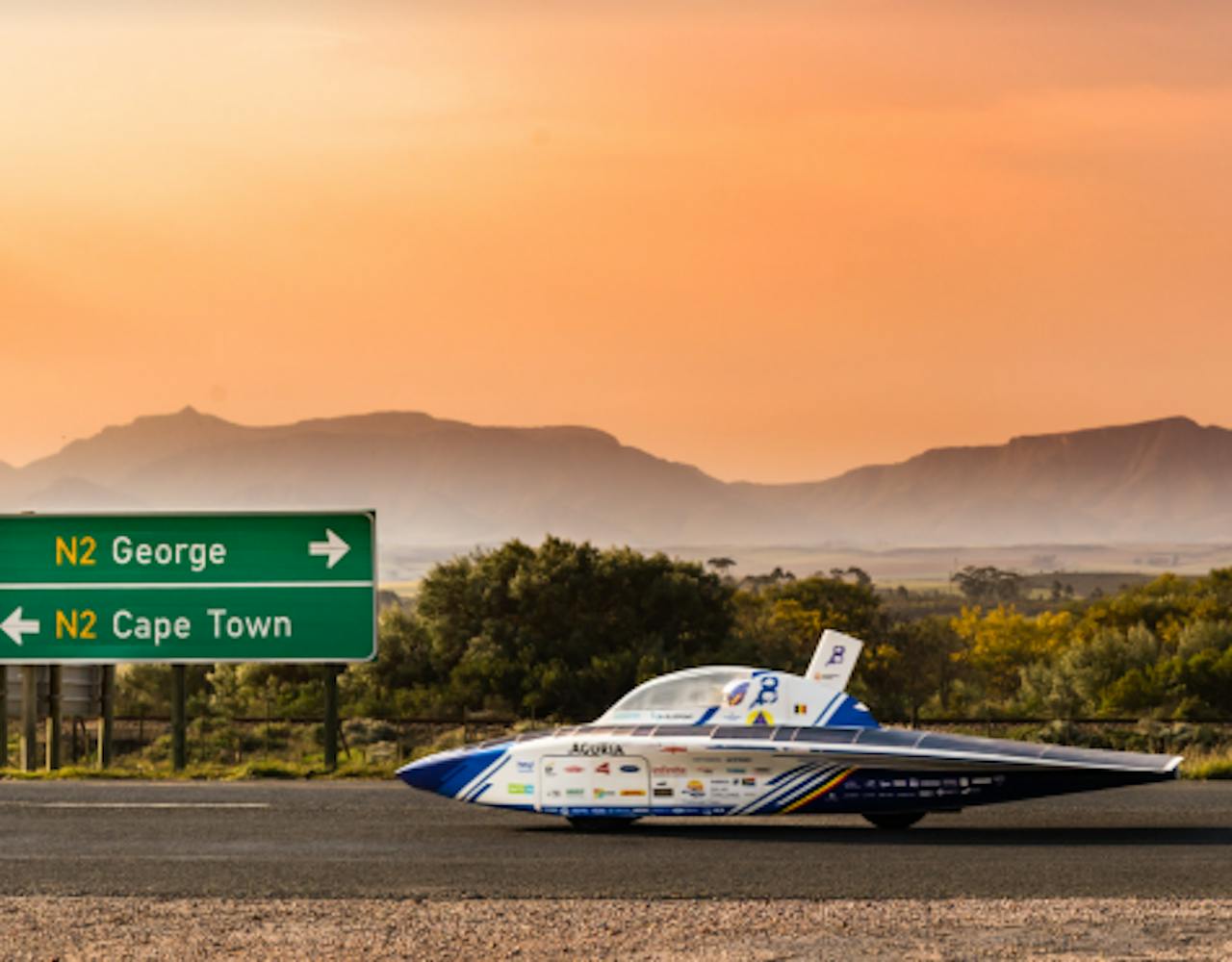The Innoptus Solar Team and the use of Ansys solutions to perform CFD-analysis
Earlier this year, we announced that Innoptus will be the main partner of the Belgian Solar Team for the coming years. But also our sister company Infinite Simulation Systems commits to support the team with Ansys solutions for the coming years. We elaborate on the use of Ansys within the design of the new solar car in conversation with Cedric Verlinden, Team manager of the Innoptus Solar Team, and Adrian Baiets, account manager at Infinite.
Within the Solar Team, Ansys solutions have been used for several years. "We use the software in particular for CFD analysis," Cedric explains. "On the one hand, we use this to determine the optimal shape of the car and the race strategy. On the other hand, it also gives us insight into how the car reacts to certain conditions during the race."
Solar car development
Every two years, the Innoptus Solar Team develops a 'new' car. In doing so, they use knowledge and experience from previous teams, but also think outside the box. Cedric: "That actually starts in the summer. Then we start thinking about different concepts to improve the design. CFD analysis are crucial during this phase. We analyse our data and based on the drag of the car, we make our aerodynamic decisions. To give you an idea: between July and December, we run more than 1,500 simulations which allow us to optimise the aerodynamics of the car down to the smallest detail. As a result, the car has the same air resistance as the side mirror of a regular car, so it is able to move super efficiently."
Account Manager Adrian adds: "By the way, the Solar Team calculates with 512 CPUs! This allows them to do all those simulations super fast. On an ordinary workstation, 1 such simulation would take over 3 weeks. Now they need about 25 minutes for that."

Nature as inspiration
One notable development last year, courtesy of positive results from the simulations, was 'the fin'. "We introduced this during the Sasol Solar Challenge in South Africa last year. It was something that had never been done before," Cedric tells. "It owes its origins to elements from nature. Our car has the nose of a shark and the tail of a bird. That fin comes from sailing. We first simulated it to see if it was effective. It turned out to give a lot of gains especially in strong crosswinds, but it also improved the stability of the car which contributed to safety." It is a great example of how simulation of ideas can lead to innovative improvements in a product.
Connecting with the field
Infinite likes to bring customers together wherever possible. For example, we put the Innoptus Solar Team in touch with our customer Traxial. Adrian: "That's super cool for us to do. These are customers with whom we don't have a typical supplier-customer relationship, but more of a substantive collaboration. The moment we want to help the team in very specific areas of expertise, our customers operating in this area have a bit more knowledge than us in this field. So it’s great to set up that triangular relationship and share knowledge."
Cedric gladly adds to that enthusiasm: "It's actually also a dream for us that a partner can reconnect us with other partners. They have so much know-how from the industry that we can effectively use to develop our solar car even better. That is hugely valuable for us. The ambitions are huge this year and such a broad partner network is key in going for the World title again. So we are going to do everything we can to be at the start with a solar car that allows us to defend our World Title.”

